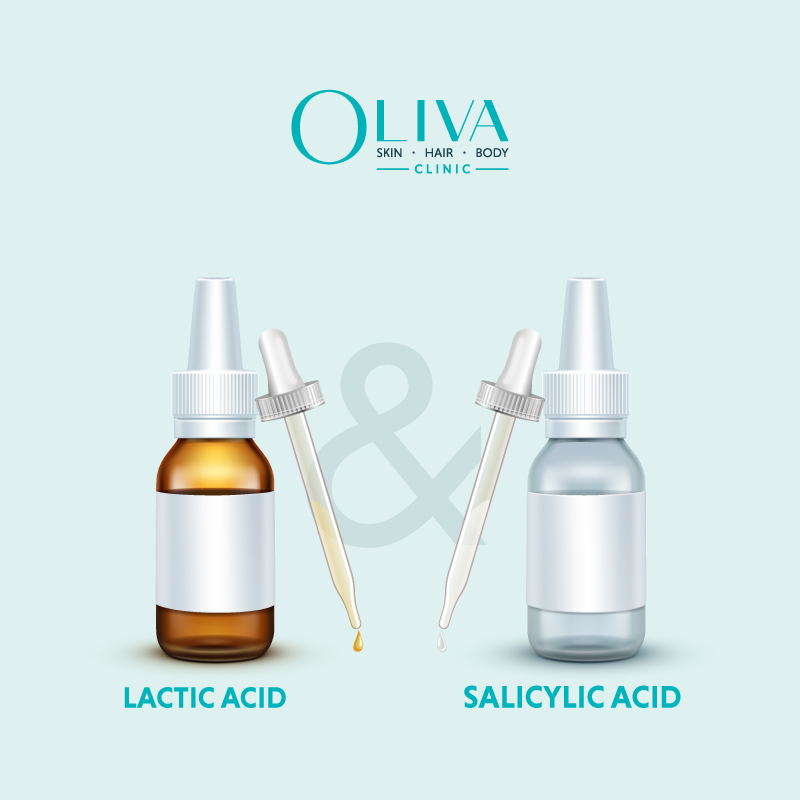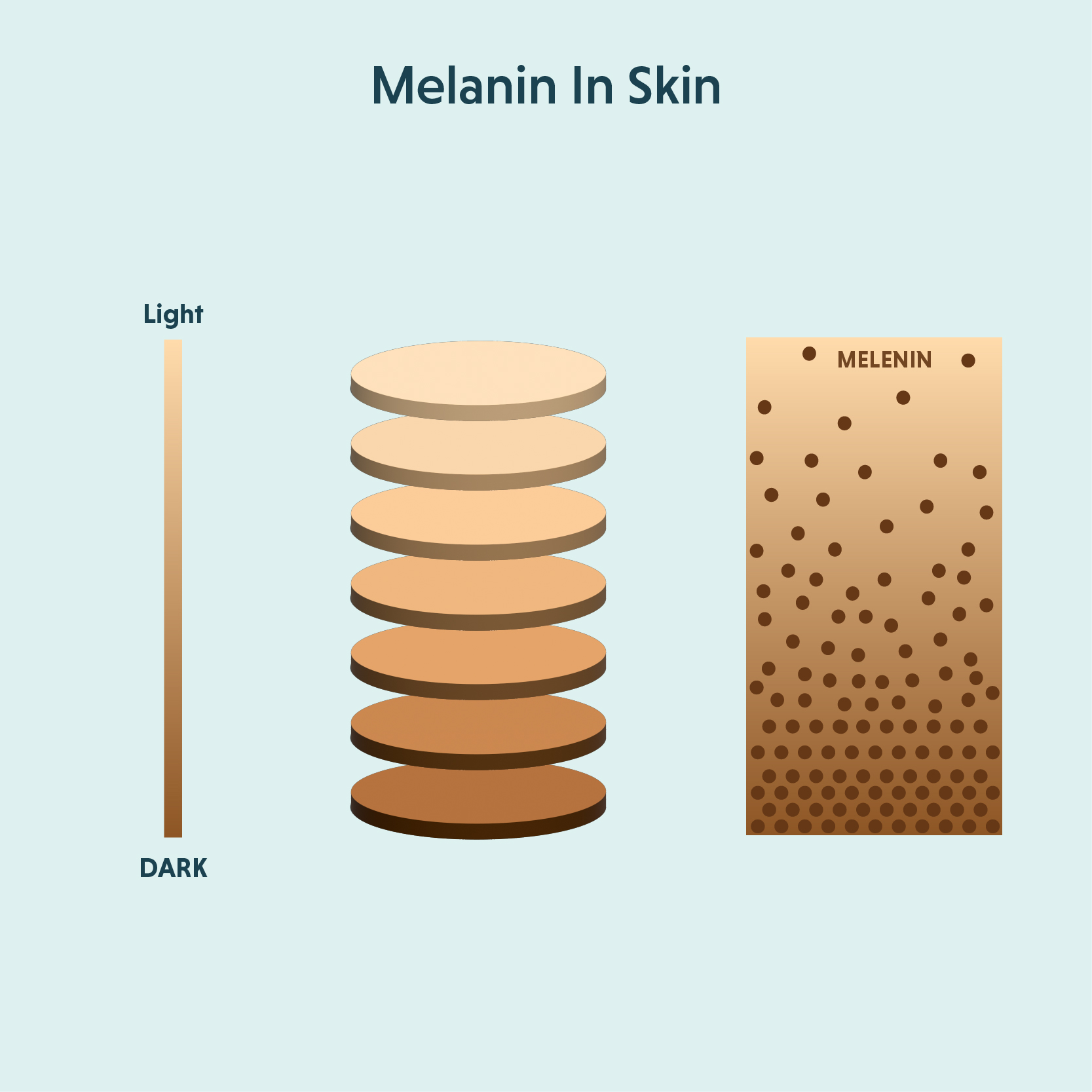Table Of Content
Salicylic Acid vs Lactic Acid: Differences, Benefits, and Uses for Skin
There are plenty of acids in the market that cater to different skin concerns. However, when we talk about refined skin texture, radiant complexion and reduced appearance of pores, then we often choose towards salicylic acid and lactic acid. These two offer amazing skin benefits when used properly. This article will delve deeper into understanding both the acids and how one can use salicylic acid and lactic acid together for the best results.
Table Of Content

What are Salicylic Acid and Lactic Acid?
Salicylic acid and lactic acid are a type of hydroxy acids which address a variety of skin concerns due to their exfoliating properties. These are present in skincare products such as serums, lotions and anti-ageing creams.
Salicylic acid is a beta hydroxy acid (BHA) derived from willow bark or sweet birch. It works as an excellent exfoliant and helps to unclog the pores.
Lactic acid is a derivative of milk and comes under the category of alpha hydroxy acid (AHA). It helps to gently eliminate dead skin cells and reveal a smoother complexion. [1]
How Do Salicylic and Lactic Acid Work?
Salicylic acid can penetrate deep into the skin layers because of its oil-soluble properties. It reaches deeper layers to break the skin protein called keratin which bonds the dead skin cells. By breaking the bonds, salicylic acid promotes the natural shedding of these dead skin cells and prevents them from clogging the skin pores.
Lactic acid is water-soluble, and it works to break the keratin bonds of the old cells on the skin’s surface. This helps dissolve the keratin and thereby reveals healthier skin underneath. [2]
Top 5 Benefits of Salicylic Acid And Lactic Acid
Let us discuss the benefits of salicylic acid –
- Exfoliates: Salicylic acid helps to exfoliate dead skin cells and promote the growth of new and healthy skin cells. This helps in improving skin texture.
- Reduces Sebum Production: Salicylic acid helps to decrease sebum production and mattifies the skin.
- Clears Pores: Being an oil-soluble acid, salicylic acid can penetrate deep within the skin layers and dissolve debris and sebum. This helps in clearing pores and preventing acne.
- Reduces Inflammation: It is anti-inflammatory and helps in soothing the skin.
- Brightens Skin Tone: Salicylic acid also helps remove impurities from the skin’s surface and reduces hyperpigmentation for a radiant skin tone. [3]
Let us discuss the benefits of lactic acid –
- Provides Hydration: Lactic acid helps maintain hydration levels of the skin. This is especially useful for people with dry and dehydrated skin. [4]
- Improves Skin Tone: It helps to enhance the skin’s natural barrier and keep impurities away, thereby improving overall skin tone.
- Stimulates Collagen Production: Lactic acid promotes the production of collagen in the skin which helps in reducing the appearance of fine lines.
- Clears Pores: Lactic acid gently exfoliates the build-up of dead skin cells on the skin’s surface revealing newer skin cells from underneath. This helps in keeping the pores clear.
- Reduces Pigmentation: Lactic acid helps fade hyperpigmentation and age spots, leading to a clear complexion.
Salicylic Acid vs. Lactic Acid
This table highlights the comparison between salicylic acid and lactic acid to give a better understanding of their usage and benefits so that one can make an informed choice based on the skin type and concern.
Features |
Salicylic Acid |
Lactic Acid |
| Chemical Structure and Properties | Beta hydroxy acid (BHA); oil-soluble | Alpha hydroxy acid (AHA); water-soluble |
| Source | Derived from willow bark, wintergreen leaves, sweet birch | Derived from milk or synthetically produced |
| Primary Uses | Treats acne, exfoliates and controls oil | Exfoliates, hydrates and brightens |
| Effectiveness and Sensitivity | Highly effective for oily, acne-prone skin; can cause dryness in sensitive skin | Gentle exfoliant; suitable for dry and sensitive skin |
| Skin Type | Best for acne and oily skin | Best for dry, sensitive, and hyperpigmented skin |
| Usage in Products | Present in cleansers, toners, spot treatments, and masks | Present in serums, lotions, creams, and peels |
| Key Actions | Penetrates pores to clear blockages and reduces inflammation due to antibacterial properties | Exfoliates skin surface, attracts moisture and improves skin tone |
| Special Considerations | Can cause dryness and irritation; use with moisturisers | Use sunscreen due to increased sun sensitivity |
| Ideal pH Range | 3.0 – 4.0 | 3.5 – 4.0 |
| Concentration in Products | 0.5% – 2% | 5% – 10% |
| Recommended For | Oily, acne-prone skin | Dry, sensitive, ageing, and hyperpigmented skin |
Can I Use Salicylic Acid and Lactic Acid Together?
Yes, you can use salicylic acid and lactic acid together. Make sure to consult a dermatologist on how and when to use it for the best results.
How to Use Salicylic and Lactic Acid in Your Skincare Routine?
It is easy to incorporate salicylic acid and lactic acid into one’s skincare routine to address various skin concerns. It is advisable to include lactic acid in the morning skincare routine for gentle exfoliation and moisturisation. Salicylic acid may increase the skin’s sensitivity to the sun, so use it at night to cleanse the pores deeply. Apply a layer of hydrating moisturiser and sunscreen with a good SPF when using these acids. Alternatively, use the acids on alternate days and then gradually increase the frequency based on the skin’s tolerance.
Advanced Treatments With Salicylic And Lactic Acid
Many professional treatments use salicylic acid and lactic acid for their exfoliating and skin-refining properties. Here are some of them:
- Chemical Peels: Salicylic acid is a popular ingredient in superficial peels that are effective in treating acne in oily skin and thoroughly cleaning the pores. Lactic acid is used in superficial to medium peels and is suitable for all skin types for gentle exfoliation. [5]
- Acne Treatments: Salicylic acid is a common ingredient present in many cleansers and toners, along with spot treatment creams or lotions. It helps reduce whiteheads and blackheads, thereby preventing acne. Lactic acid is mainly present in hydrating and anti-ageing creams to help gently clear the pores and brighten the skin tone. Both salicylic acid and lactic acid show promising results in treating mild to moderate acne.
- Wart Removal: Salicylic acid is used in high concentrations (up to 40%) in wart removal creams. It helps in softening the wart when used consistently. Lactic acid is a mild exfoliator, so it is not generally used in wart removal treatments.
- Anti-Ageing Treatments: Both salicylic acid and lactic acid are present in several anti-ageing formulations for their exfoliating properties. Salicylic acid helps in increasing cell turnover, while lactic acid promotes collagen production. Both these acids help in reducing the appearance of fine lines and wrinkles.
Dermatologists Opinions on using Salicylic Acid and Lactic Acid
Dermatologists recommend the use of both salicylic acid and lactic acid to treat a range of skin concerns. Both acids are generally well tolerated by the skin when initially introduced in small quantities.
Side Effects Of Salicylic Acid And Lactic Acid
Here are some side effects of salicylic acid and lactic acid that you should know:
- Irritation: Some people might experience irritation while using either of the acids for the first time. It is best to consult a dermatologist before applying salicylic acid or lactic acid if you have highly sensitive skin.
- Dryness: It may lead to excessive dryness if applied in excess.
- Peeling: If you use salicylic acid or lactic acid or both in high concentrations, the skin may also start to peel.
- Allergic Reactions: Some people may experience allergic reactions, including hives, after using an excess concentration or dosage of lactic acid or salicylic acid.
- Increased Sensitivity To The Sun: It is a common side effect to experience increased sun sensitivity while using these acids. Make sure to include sunscreen in your skincare routine. (6)
Precautions You Need To Take When Using Lactic Acid And Salicylic Acid
Here’s a list of precautions that you need to follow while using salicylic acid and lactic acid:
- Pregnant and lactating women should exercise caution while using salicylic and lactic acids. It is best to consult a dermatologist prior to incorporating them into your skincare routine.
- Make sure to avoid contact with your eyes, intimate areas, breasts and underarms while using these acids. If you accidentally apply them on such sensitive areas, rinse with water immediately.
- Do not use salicylic acid and lactic acid on active acne or broken skin.
- If you have diabetes or any condition related to blood circulation, let your dermatologist know about that in detail and seek consultation before using these acids.
- Always perform a patch test to check for any adverse reactions.
- Both salicylic acid and lactic acid increase your skin’s sensitivity to sunlight. Make sure to use sunscreen with SPF 50 or higher and reapply it after every four years.
- If you have sensitive skin, introduce these acids gradually into your skincare routine and monitor for any irritation. If they are well tolerated by the skin, you can slowly increase the frequency.
- If you experience any stinging or burning sensation or peeling of the skin, consult your dermatologist immediately.
Takeaway
Salicylic acid and lactic acid are excellent ingredients that help improve skin texture and reduce acne. Just like any other acid, they need to be in appropriate concentration to avoid any adverse reaction. Therefore, it is best to consult an experienced dermatologist before incorporating these acids into your skincare routine. By following the instructions of your dermatologist, you can make the most of the benefits.
Frequently Asked Questions
Yes, the dermatologist can recommend a prescription formula that contains both lactic and salicylic acid, depending on your skin concern and skin type.
It is not advisable to mix vitamin C with lactic acid and salicylic acid without consulting a dermatologist.
It is advisable not to mix vitamin C, glycolic acid and benzoyl peroxide with salicylic acid and lactic acid.
Even if you miss a dosage of salicylic acid and lactic acid, do not double the dosage. Simply skip it and get back to your skincare routine.
It is advisable to store both salicylic acid and lactic acid in a cool and dark place at room temperature.
Oily and acne-prone skin types can safely use salicylic acid, whereas lactic acid is gentle and suitable for all skin types.








